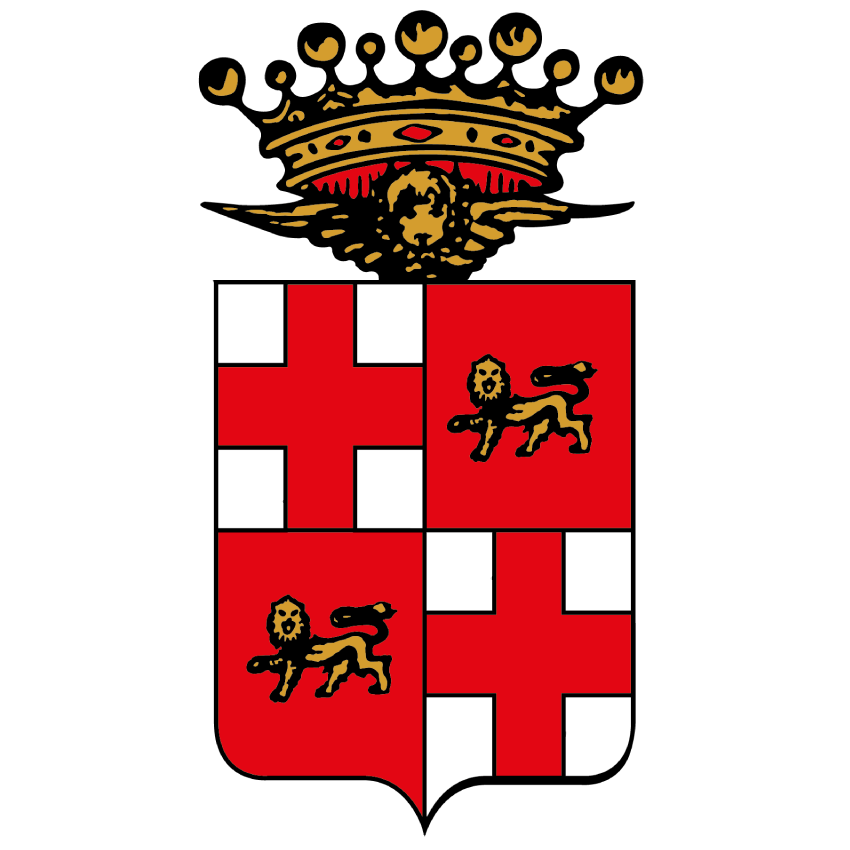Church of Saint Margaret
The church was built between 1636 and 1671. It is built to a Greek cross plan surmounted by a hanging lantern and a false lantern housing. The façade is assymetric, having both columns and pillars, and includes a central gable. The theme of the gable on the façade is repeated as a decoration for the bell tower and the windows on the dome. The losses it suffered during the early 1800s included the two side altars. The present main altar, in wood and stucco, probably came from St. Andrew’s church, which was destroyed, and replaced the previous marble one. It still features an altarpiece showing “the Most Holy Trinity crowning the Virgin Mary between Saints Dominic, Margaret, Catherine of Siena and the Magdalena” This work, after Moncalvo or his school, is therefore older than the alterations to the Baroque church.
Church of Saint Philip Neri
This church was built between 1664 and 1673 to a design of Antonio Bettino of Lugano. The interior has a typical structure for churches of the counter-reform deriving from Leon Battista Alberti’s St. Andrews of Mantua, which means a single nave of rectangular shape covered by a barrel vault, a presbytery without an apse and four side chapels standing around the hall. The commissioners of Chieri in the 1600s and 1700s managed to collect a wide range of Piedmontese paintings of the period, as shown by the fact that the altarpieces are the work of some of the most important court painters, such as Legnanino, Beaumont and Seyter. The imposing edifice seen next to the church is the Convent of the Philippines, which became the Seminary of the Archbishops of Turin during the 1800s. It remained such until the 1950s and all the diocesan priests of the diocese studied there. In particular, it hosted important figures from 19th century Turin, such as St. Joseph Cafasso and especially St. John Bosco, founder of the Salesians. When the Seminary was moved to Turin in 1949, the complex was converted into a school building, with the removal of many of its decorations.
Church of Saint Bernardine
Saint Bernardine’s is the headquarters of the Fraternity of the Most Holy Name of Jesus and Mary, the largest of those still in existence in the city. In 1792, between the two bell towers of the previously existing façade, a new one (the present one) was added by Mario Ludovico Quarini. This has recently been restored and it bears a certain rigidity of design, a prelude to Neo-classical. On entering, though, it becomes evident that this is an interior where light is a fundamental, vital element. Sloping down from the height of the Victorian octagonal dome, through openings hidden by stuccoes by Riva, the typically Baroque lighting effect creates the internal space. There are works by Moncalvo also in Saint Bernardine’s and his altarpiece of the “Virgin Mary with Baby between Saint Michael the Archangel and Saint Bernardine of Siena” dominates the choir of the church. Another work by the same artist “Coronation of the Virgin Mary between Saints George and William (patron saints of Chieri) and Rocco and Sebastian” was moved here in the mid-1800s, when the Church of Saint Rocco was demolished. After having been closed and abandoned for a time, the building now appears completely restored, thanks to the efforts of the Fraternity and with the support of many of the citizens of Chieri. Its façade has recently been retouched to restore the colours it had in the 1800s.
Church of Saint Antonio
On the edge of Piazza Cavour, overlooked by Saint Bernardine, there is the convent and church complex of Saint Anthony the Abbot, once the mediaeval “ospitales” where the Antonians received pilgrims. The church of Saint Anthony was completed around 1445, but of the original only the bell tower is still standing. Later, when the Antonian Order fell into decline, the complex was entrusted to the Company of Jesus. It was the Jesuits who took over the construction of Saint Anthony. In the XVIIIth century work on refurbishing the church was entrusted to the architect Filippo Juvarra. His project was later taken over by the Franciscan Order of Friars Minor, who settled in the convent and completed the building work. The interior of the church is particularly interesting, especially for the architectural ideas that it features and for the use of light.
Sanctuary of the Annunziata
The project of this Sanctuary was entrusted by Christine of France to the Carmelite Andrea Costaguta. Dating back to the second half of the 1600s, it stands on the site previously occupied by a 15th century chapel and on the inside it contains a fresco to which miraculous healing powers were attributed after a young deaf and dumb boy regained his powers of speech. As a result of this event it was decided to construct the present sanctuary, between 1651 and 1655.
Church of Saint George
The rock of the same name is the location for the church of Saint George. It is also the area where the first mediaeval nucleus of Chieri arose, which is recorded as far back as the XIth century. The church was rebuilt in the 1400s, following the canons of Gothic architecture, and features a rectangular plan with three naves covered by crossed vaults and a central polygonal apse. The peculiar belfry (Torre del Comune – Municipal Tower) with its 1600s pagoda-type roof is all that remains of the fortifications put up at the beginning of the XIth century by the Bishop of Turin, Landulph, and it was incorporated into the first span of the left hand side nave. Various alterations have been made over the centuries to give St. George’s its present appearance. There are a number of works of art inside the building, including paintings attributed to Guglielmo Caccia, known as Moncalvo, or his school; a wooden statue of St. George; a bronze bell bearing seals showing St. George (patron of the city) and a lion passant (symbol of the Commune of Chieri). This bell dates back to 1452 and is considered to be one of the oldest in Piedmont. Next to the church stands the Convent of the Mendicant Friars of the Franciscan Order of Friars Minor, which is a parish house today. This religious order, which arrived in Chieri in the second half of the XVth century, gave rise to the works of renovation of the church, which were a feature of the Baroque period. In the 1600s the area below the main altar of St. George’s provided a site for the church of Saint Michael the Archangel, completely frescoed and with an altarpiece attributed to Moncalvo.


